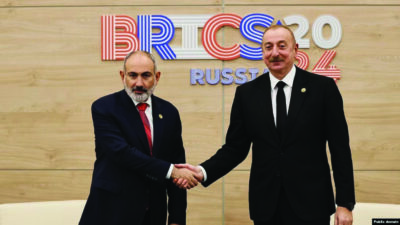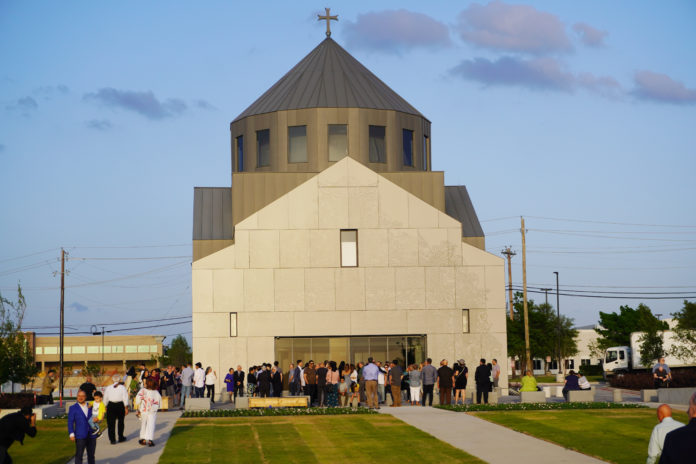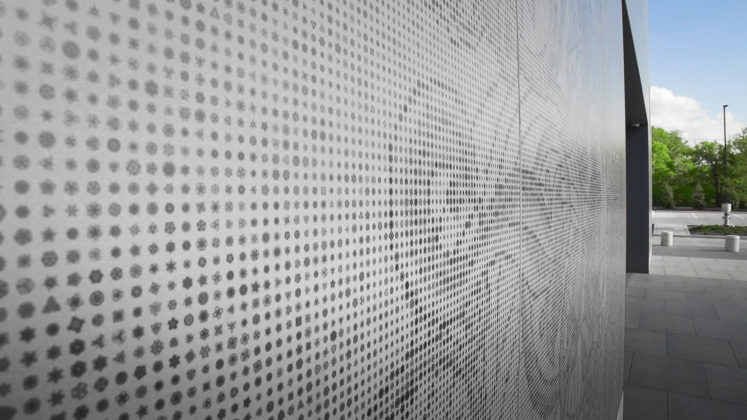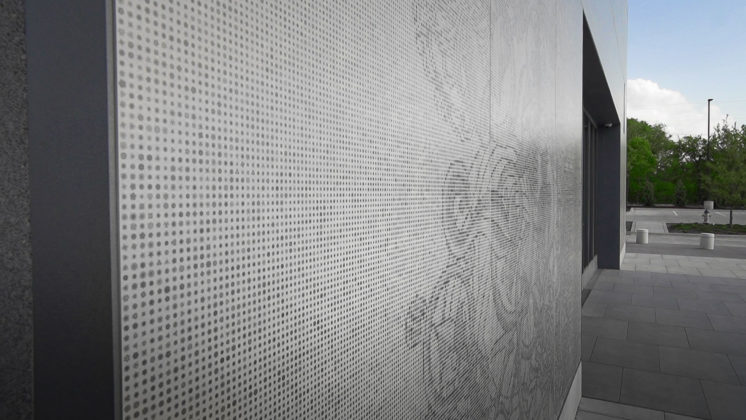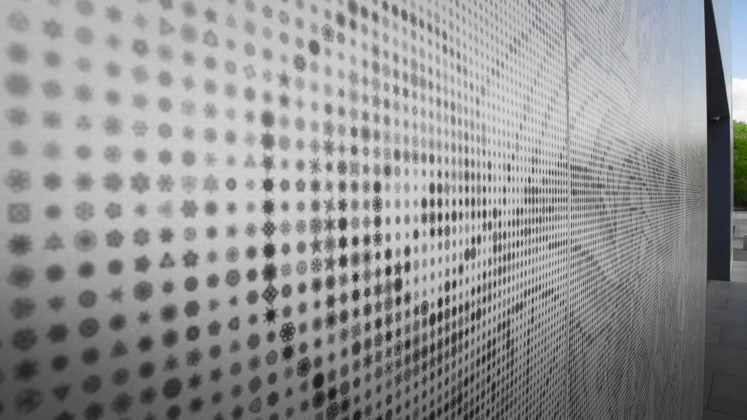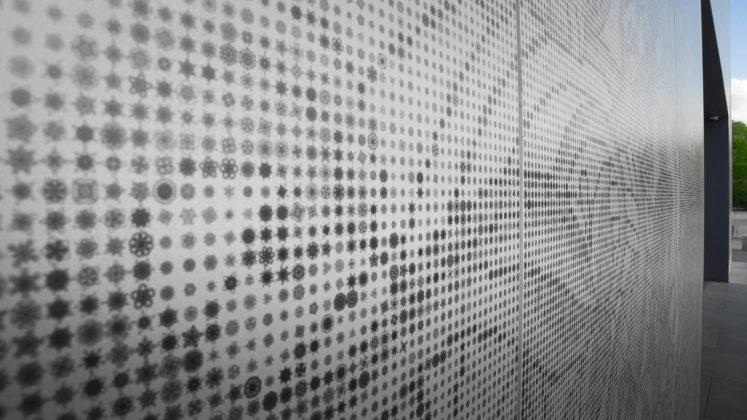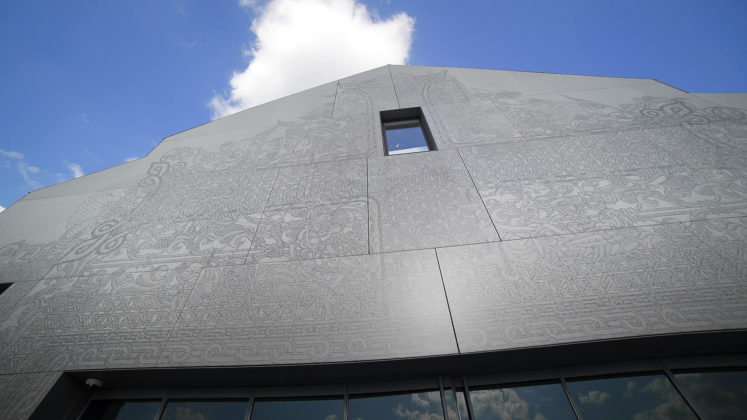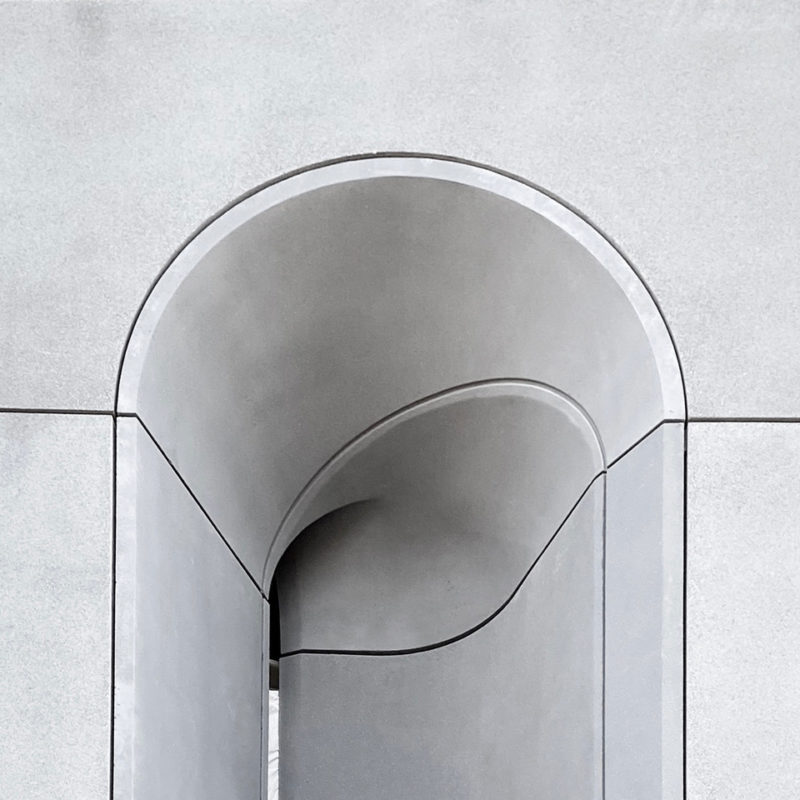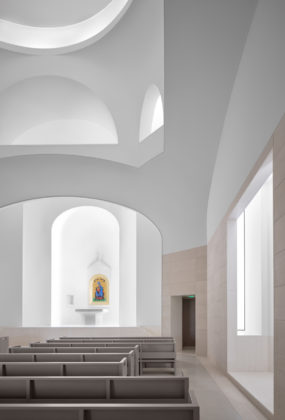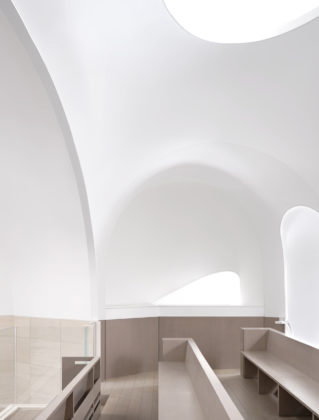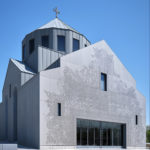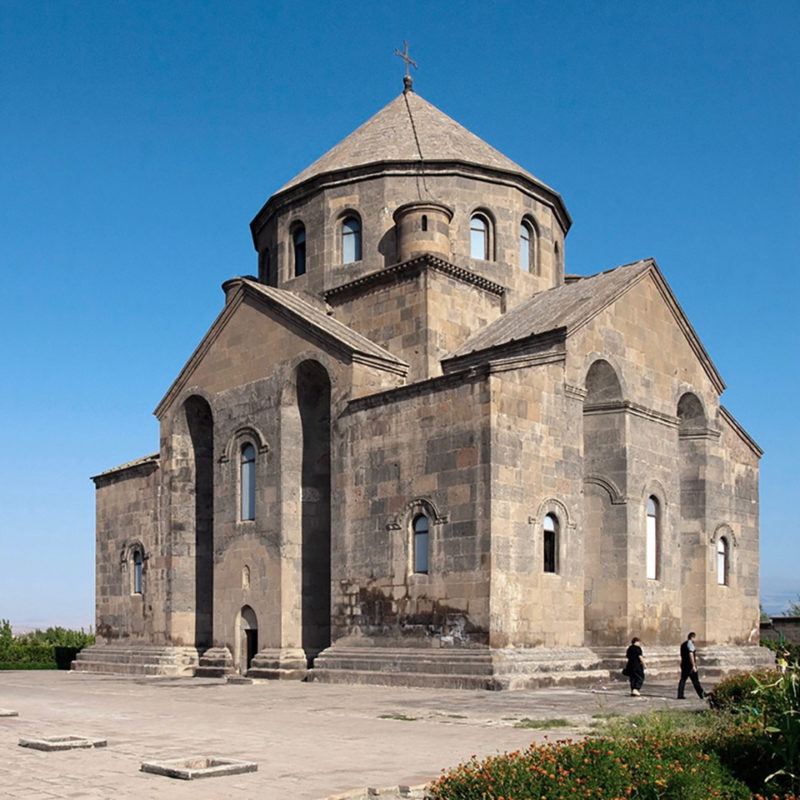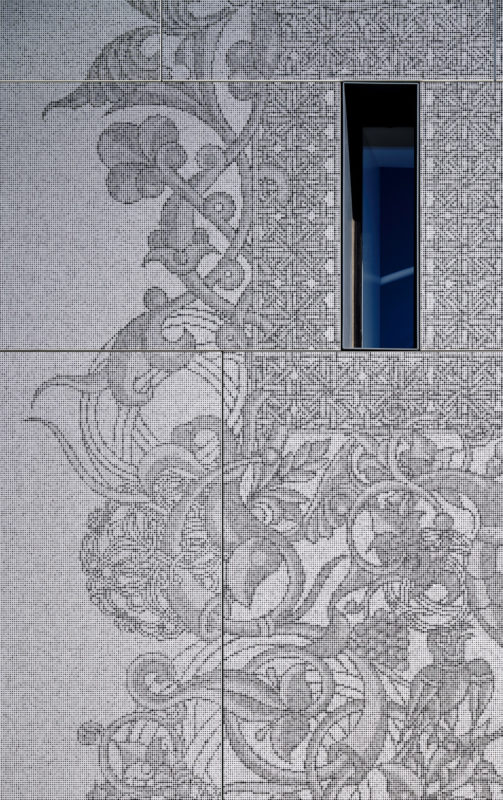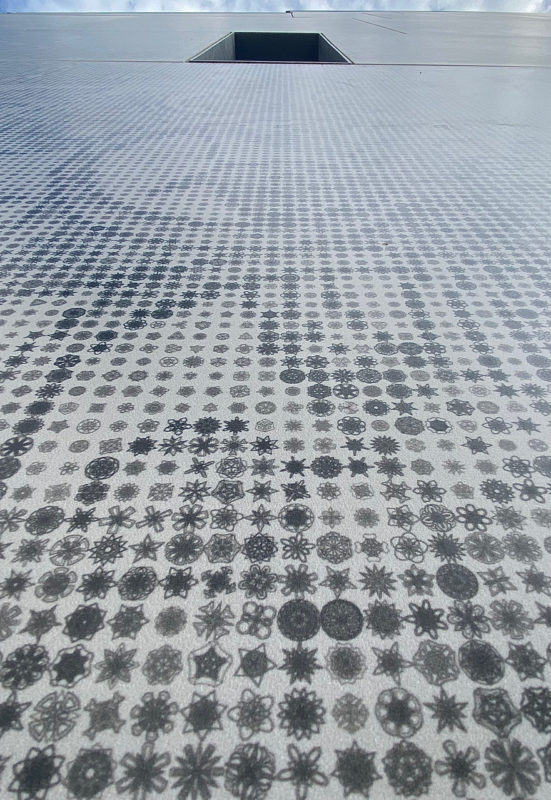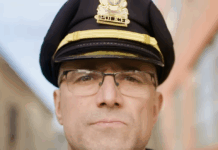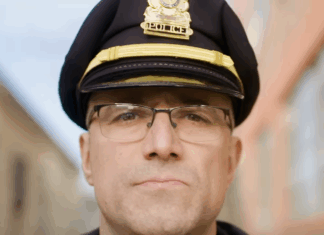By Marla Sarokhanian and Mihran Aroian
Special to the Mirror-Spectator
DALLAS, Tex. — Armenians from across the state of Texas converged at the consecration of Saint Sarkis Armenian Church in Carrollton, near Dallas, this past weekend. The newly constructed church was inspired by the seventh-century St. Hripsime Church in Echmiadzin, with a modern façade etched with 1.5 million unique pixels representing the Holy Martyrs of the Armenian Genocide.
The consecration events began on Friday evening, April 22, followed by the consecration led by Bishop Daniel Findikyan on Saturday. St. Sarkis hosted a sold-out banquet Saturday evening in the newly constructed banquet hall with a fabulous dinner and live Armenian entertainment. Present for the consecration was our Primate, Bishop Daniel Findikyan, Archbishop Vicken Aykazian, Archbishop Haigazoun Najarian, and Archbishop Khajag Barsamian along with Rev. Fr. Ghevond Ajamian, pastor of St. Sarkis. It was a very moving and spiritual experience for all who attended.

On a beautiful 4.5 acre setting, we are creating a space for worship and celebration of our ancient heritage inspired by our Christian faith, historical experience, and cultural traditions. The architecture is one that embraces the traditional but interprets it in a modern way. The church structure is meant to be both a sanctuary where we practice our Christian faith, and a monument, reminding us of our ancestors who sacrificed for the very faith we practice today.
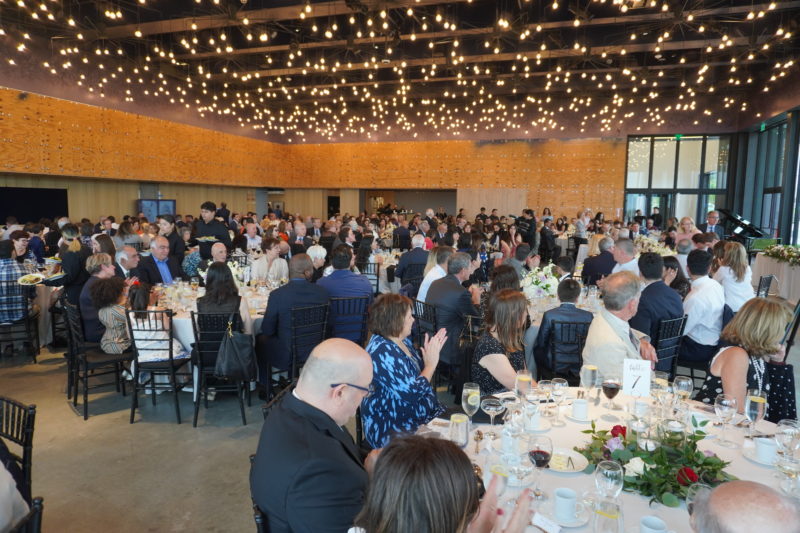
This new church is iconic, unmistakably Armenian, and unlike any other in the world. The creation of the three-building church and community center complex was lead by entrepreneur Elie Akilian, whose vision, commitment, attention to detail, and resources were the driving force behind every aspect of the project. Akilian worked with architect Stepan Terzyan on the planning of the complex, and they then invited Terzyan’s long-time collaborator, New York-based architect David Hotson, to work with them on the detailed design development and implementation. Akilian and Terzyan orchestrated the project from beginning to end, coordinating design, engineering, permitting and bidding, and working through the pandemic to oversee every stage of construction.
